In the business world, lead generation is a lifeblood to expand your customer base and increase your sales. Among many different digital marketing lead generation strategies, what’s particularly remarkable about Google Ads is that it will give you a powerful way to find people looking for products or services similar to yours. Within this step-by-step guide, I will take you through setting up and optimizing a Google Ads campaign on How to Generate Leads with Google Ads.
What You’ll Learn:
- Basics of Google Ads to Generate Leads
- Keyword Research for Targeting the Right People
- Creating the Right Kind of Ad Copy That Drives Clicks
- Proper Budget and Best Bang for Your Buck Lead Generation
- Conversions, Tracking, and Optimizing Performance
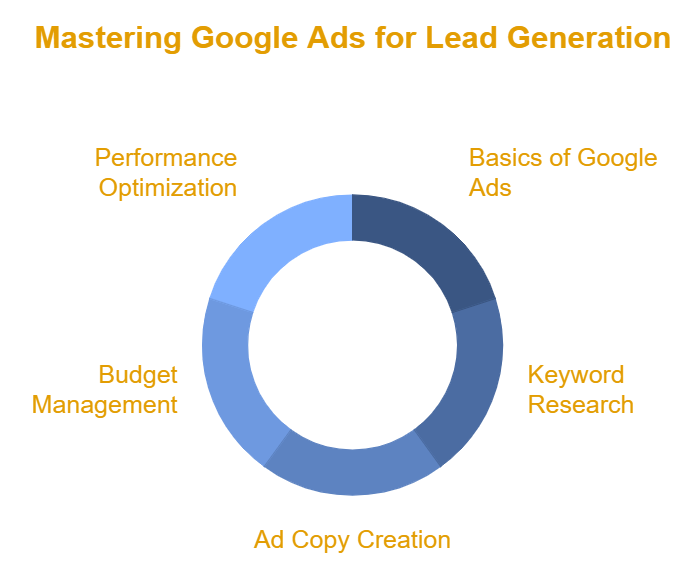
1. Getting Familiar with Google Ads for Lead Generation
Google Ads is known previously as Google Ads. It can be regarded as a PPC where, in turn, the advertisers can offer bids for certain keywords based on their business needs. Every time when the users look at those keywords searching in search engines, your ads will appear above the search results to create immediate visibility of the advertisements.
Lead generation campaigns should be directed at a user to take them to the level of doing something. For example, fill in the contact form, subscribe to a newsletter, request a quote, etc. Use Google Ads- It is an amazingly strong vehicle in order to target very, very accurately the right people who are probably the most qualified traffic to your website or landing page.

2. Keyword Research for Lead Generation
Keyword research is the base of any Google Ads campaign. If done right, it tells you that your ads will appear in front of just those potential customers who are likely to turn into leads. Here’s how you can do proper keyword research:
Step 1: Define Your Goals
Define what you would consider to be a lead for your business – whether that’s only a form submission, a phone call, or a newsletter sign-up. Once you have defined that, you can limit the number of keywords you’re using to the most relevant ones.
Step 2: Use Google’s Keyword Planner
Use Google’s Keyword Planner to find keywords your potential leads are searching for. Enter terms related to your business and evaluate the suggestions of what Google suggests. Find keywords that come with high volumes with medium or low competition.
If you have a marketing agency, good keywords might be “PPC lead generation” or “Google Ads lead generation strategies.”
Step 3: Target Long-Tail Keywords
While broad words like “marketing” or “advertisement” have high search volumes but are cost-expensive and too general, a long-tail keyword like “how to use Google Ads for leads” is much more specific yet economical and likely to attract users closer to making decisions.
Step 4: Competitor Keyword Analysis
Another key strategy is competitor analysis. You can view where your competitors are bidding, and what their keywords are doing in the marketplace with SEMrush or Ahrefs, and you keep refining your keyword strategy along the way.
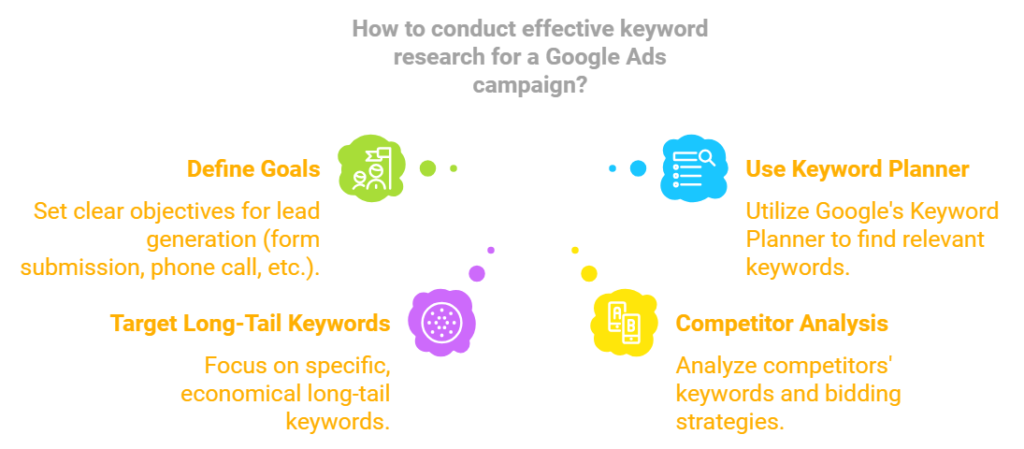
3. Good Ad Copy
Ad copy can be incredibly effective in influencing the user to click on your ad. The ad copy will need to tell your audience what value you deliver and include a compelling CTA. Here’s how you do it:
Step 1: Headline Optimization
The headline on your ad is where you want to make that first impression. So, make it grabber: include your primary keyword to create relevancy, such as “How to Generate Leads with Google Ads.”
Step 2: Benefits, Not Features
Talk about how your product or service will benefit the person, not its features. Ask what value your prospect is looking for more leads, increased conversions, or a higher ROI. For instance, instead of “We offer PPC services,” you might say, “Get High-Quality Leads with Expert PPC Campaigns.”
Step 3: Strong Call-to-Action (CTA)
A clear and concise CTA encourages the user to take action. You can use phrases such as “Get a Free Consultation,” “Request a Quote Today,” or “Sign Up Now” to boost your CTRs and leads.
Step 4: Ad Extensions
Ad extensions: Ads that include ad extensions have information beyond an average search ad, in that they may include a phone number, site links, or even a location, in addition to any text around your ad. To drive leads attach a lead form extension or a call extension so that potential leads will be able to get in contact directly from the ad.
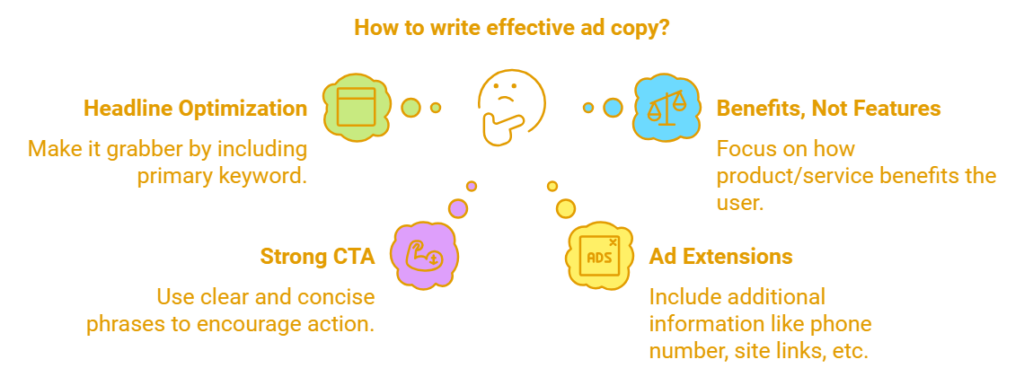
4. Budgeting and Bidding
How to properly allocate your budget on what to spend and not spend without overstretches, while also ensuring the effectiveness of reaching the relevant target audiences. Here’s How to Generate Leads with Google Ads while optimizing your budget for lead generation.
Step 1: Set a Realistic Daily Budget
The budget will come first in terms of how much you would be willing to spend on your lead generation campaign every day. It would be good to start from the desired cost per lead and your budget; therefore, a reasonable number of leads can be generated per day.
For example, if you want your target cost per lead to be about $50 and leads need to be generated at a rate of 10 leads per day, your budget for the day should be about $500.
Step 2: Choosing a Bidding Strategy
Google Ads has several types of bidding strategies, but for lead generation, Target CPA and Cost per Acquisition are two of the best. It can automatically adjust the bids for maximum conversions that are leads within the target CPA set.
Or let Google optimize your bid based on which clicks are most likely to result in a lead through Maximize Conversions
Step 3: Monitor and Adjust
Monitor the budget and performance frequently. If some keywords or ads do well, budget more towards them and pause or reduce it for poor-performing ones. This would be a routine check to ensure that you’re maximizing the ROI of your lead generation campaign.
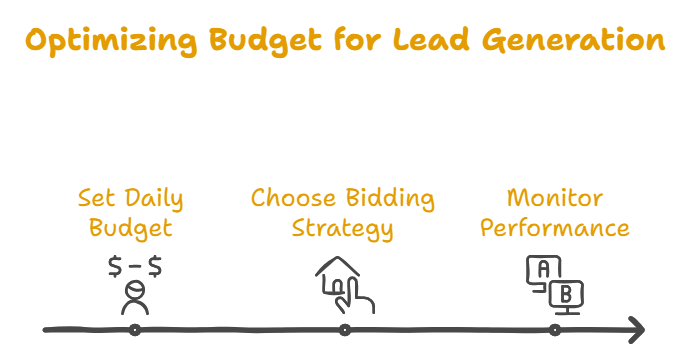
5. Landing Page Optimization
A landing page is extremely important and requires optimization before clicks will ever convert into leads. After he or she clicks on your ad, this is where he or she should go thoughtful, easy to use, and able to convert. Here are some key tips:
Step 1: Keep the message consistent
Make sure that whatever it is you’re saying on your landing page aligns with what was told them in the ad. If you promised them in the ad that they can ask for a free consultation, then show them a form that’ll actually do just that on the landing page. Every difference between the ad and the landing page increases the bouncing rate.
Step 2: Optimize the Form
Capture lead generation through ways of forms, but most times, it’s formed. Ensure your form is as short as possible, and requests only the necessary information, and the more fields you have on your form, the lower your conversion rate will be. For instance, giving a name and email address will generate more leads than a long form that requires many personal details.
Step 3: Great Call-to-Action
Whereas your ad might have a great call-to-action, the landing page should also. Ensure that the CTA button is great and preferably action-oriented text such as “Get Your Free Quote” and big enough.
Step 4: Mobile Optimization
The landing page must be mobile-friendly given the very large volume of leads that come from mobile traffic; otherwise, the user will stay on the site for a much longer time and bounce due to the poor performance of the page on their phone.
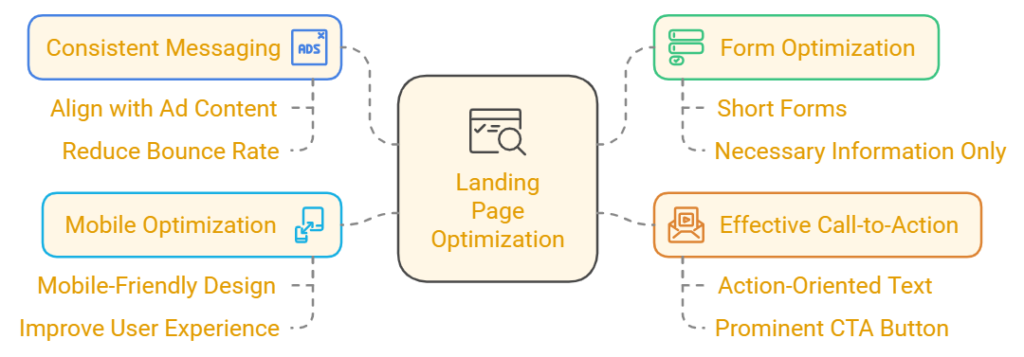
6. Tracking Conversions and Optimizing Performance
Conversion tracking is central to whether your Google Ads campaign is bringing in the right leads. Here’s how to Generate Leads with Google Ads through the following setup of conversion tracking and optimizing performance:
Step 1: Set Up Google Ads Conversion Tracking
You will have a conversion tracker in Google Ads where you can monitor specific actions that happen on your website through form submissions, calls, etc. You can enable it on the “Conversions” section of your Google Ads account from where you can create a new conversion action and add the tracking code snippet to your website.
Step 2: Analyze Performance Metrics
Use Google Ads reports to track the most important metrics, which include CTR, conversion rate, and cost per conversion. What are the best performers of keywords, ads, or landing pages that don’t need improvement?
Step 3: A/B Testing
Test various versions of ad copy, CTAs, or landing page design, and determine which specific version results in more leads. The concept is to continue running and refining your executions with time.
Step 4: Adjust Bids and Budget
In case some campaigns or keywords have generated more leads at a lower cost, then you may increase the bids for those campaigns or increase the budget for them. Reduce the bids or stop ads for underperforming keywords or ads not to waste the budget.
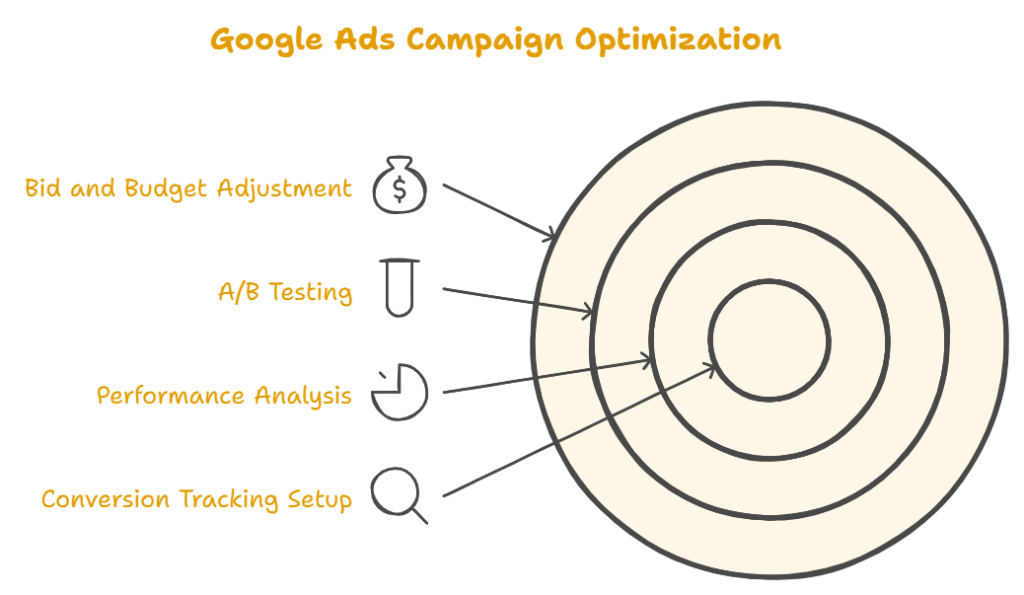
Conclusion
Google Ads, targeted for lead generation for your business is just the prescription you might need. Suddenly, you will start getting far more leads than you’ll know what to do with from people interested in becoming new prospects. It will walk you through step-by-step procedures on how to conduct keyword research, write compelling ad copy, optimize landing pages, and track conversions-what will result in a successful Google Ads campaign that will bring high-quality leads for years on end.
All of this is possible only if you keep optimizing and testing strategy and then keep pace with the best practices regarding PPC lead generation. Over time, and with fine detail attention, Google Ads will become one of the most powerful tools you own for the growth of your business. You can also checkout our other blogs https://brandreachsolutions.com/referral-programs-for-lead-generation/ for more information.